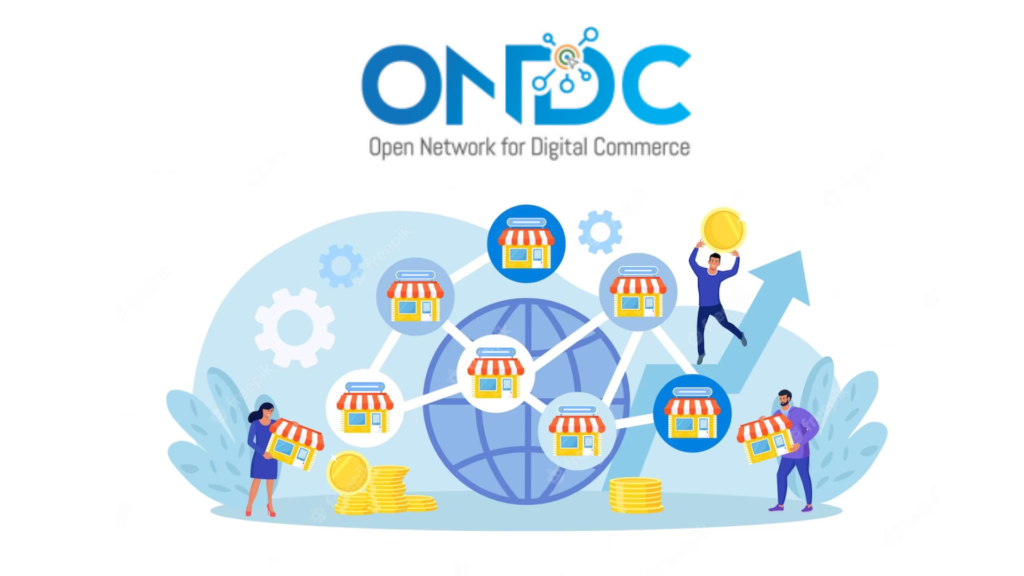Introduction
In the ever-evolving landscape of digital commerce, a new player has emerged to reshape the industry – ONDC. In this blog post, we will dive deep into the world of ONDC and explore its significance, benefits, challenges, and more. Let’s begin our journey by understanding the basics.
What is ONDC?
ONDC stands for Open Network for Digital Commerce. ONDC refers to a digital infrastructure that enables seamless connectivity between various participants in the e-commerce ecosystem. It is an initiative by the Government of India to promote fair and open competition in the digital marketplace.
It emphasizes transparency, interoperability, and non-discrimination among sellers, service providers, and consumers. The ONDC platform aims to empower small and medium-sized businesses, providing them with equal opportunities to thrive in the digital economy.
ONDC in India: Transforming Digital Commerce
ONDC is an ambitious project driven by the Government of India to revolutionize the digital commerce landscape in the country. It aims to create a level playing field, reducing the dominance of certain market players, and fostering healthy competition. ONDC strives to empower local businesses, increase consumer choice, and enhance overall efficiency in the digital marketplace.
How ONDC Works
ONDC operates as an open and inclusive platform, leveraging technology to facilitate seamless transactions and interactions. It establishes a common digital infrastructure, enabling various stakeholders such as sellers, buyers, logistics providers, and payment gateways to connect and collaborate. The platform provides standardized APIs (Application Programming Interfaces) that enable interoperability and smooth integration between different systems.
ONDC Business Model
The ONDC business model revolves around fostering a fair and competitive digital marketplace. It enables sellers, especially small businesses, to reach a wider customer base without being subjected to unfair practices. The platform aims to facilitate secure transactions, enhance supply chain efficiency, and provide equal opportunities for all participants.
Exploring the ONDC Project
The ONDC project is an initiative that focuses on building a robust and inclusive digital infrastructure for the commerce ecosystem. It involves collaborations with various stakeholders, including government agencies, industry players, technology providers, and regulatory bodies. The project aims to drive innovation, enhance customer experience, and create a conducive environment for digital commerce growth.
Advantages of ONDC
- Increased Market Access: ONDC offers small and medium-sized businesses the opportunity to access a wider consumer base, expanding their market reach.
- Reduced Dependence: ONDC aims to reduce the dependence of businesses on dominant e-commerce platforms, promoting healthy competition and diversification.
- Enhanced Trust and Transparency: The platform fosters trust and transparency by providing standardized processes and ensuring fair practices among all participants.
- Level Playing Field: ONDC creates an even playing field, enabling businesses of all sizes to compete based on their products and services rather than financial strength alone.
Benefits of ONDC
- Empowering Small Businesses: ONDC empowers small businesses by providing them with equal opportunities to grow and succeed in the digital marketplace.
- Increased Competition: The platform promotes healthy competition among sellers, driving innovation and offering consumers a wide range of choices.
- Seamless Integration: ONDC’s standardized APIs enable seamless integration between different systems, facilitating efficient operations and improving customer experiences.
- Enhanced Customer Trust: The emphasis on transparency and fairness instills confidence in customers, leading to increased trust in online transactions.
Challenges of ONDC
- Technical Implementation: Developing a robust and scalable digital infrastructure requires overcoming technical challenges, ensuring seamless connectivity, and maintaining data security.
- Adoption and Awareness: Encouraging widespread adoption of ONDC and creating awareness among businesses and consumers about its benefits can be a significant challenge.
- Balancing Stakeholder Interests: Addressing the diverse needs and concerns of various stakeholders, including sellers, platforms, regulators, and consumers, is essential for the success of ONDC.
The Concept of ONDC: Transforming Digital Commerce Landscape
The concept of ONDC revolves around creating a level playing field in the digital commerce ecosystem, fostering fair competition, and promoting inclusivity. It aims to redefine the dynamics of the digital marketplace by prioritizing transparency, interoperability, and consumer-centric practices. ONDC embodies the vision of a digitally empowered India, where businesses of all sizes can thrive and consumers can enjoy a wide array of choices.
Disadvantages of ONDC
- Implementation Complexity: Implementing ONDC on a large scale requires significant coordination, collaboration, and investment in technology infrastructure.
- Regulatory Challenges: Ensuring compliance with evolving regulations and addressing potential legal issues is crucial for the seamless functioning of ONDC.
- Managing Growth and Scale: As ONDC gains traction, managing the rapid growth and scale of the platform while maintaining efficiency and quality poses a challenge.
Conclusion
ONDC has the potential to reshape the digital commerce landscape in India, creating a more inclusive and competitive environment. By providing equal opportunities, promoting transparency, and fostering innovation, ONDC aims to empower businesses and consumers alike. As the initiative progresses, addressing challenges and ensuring effective implementation will be critical. Let us embrace this transformative journey and unlock the vast potential of the Open Network for Digital Commerce.
